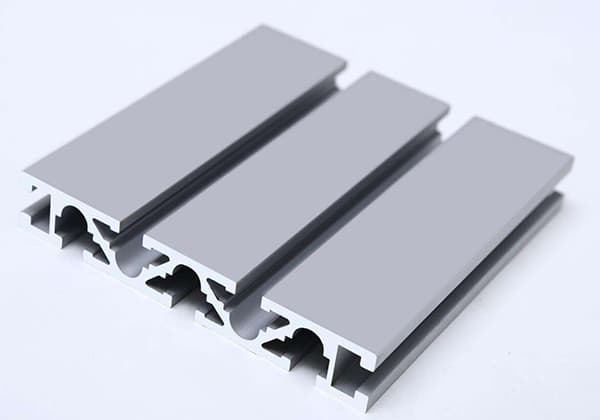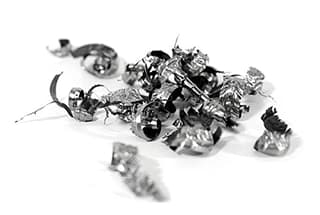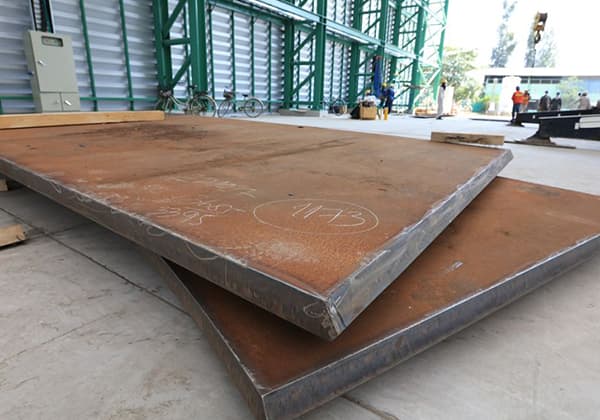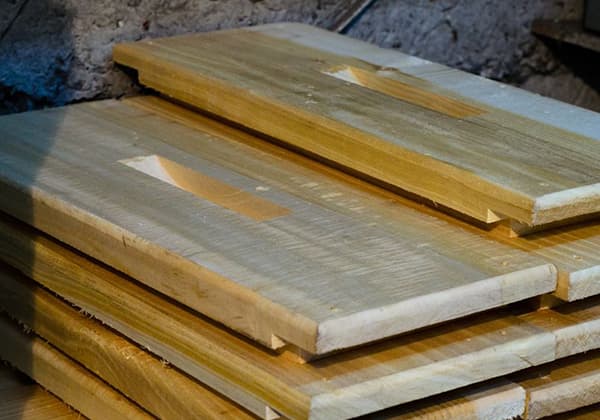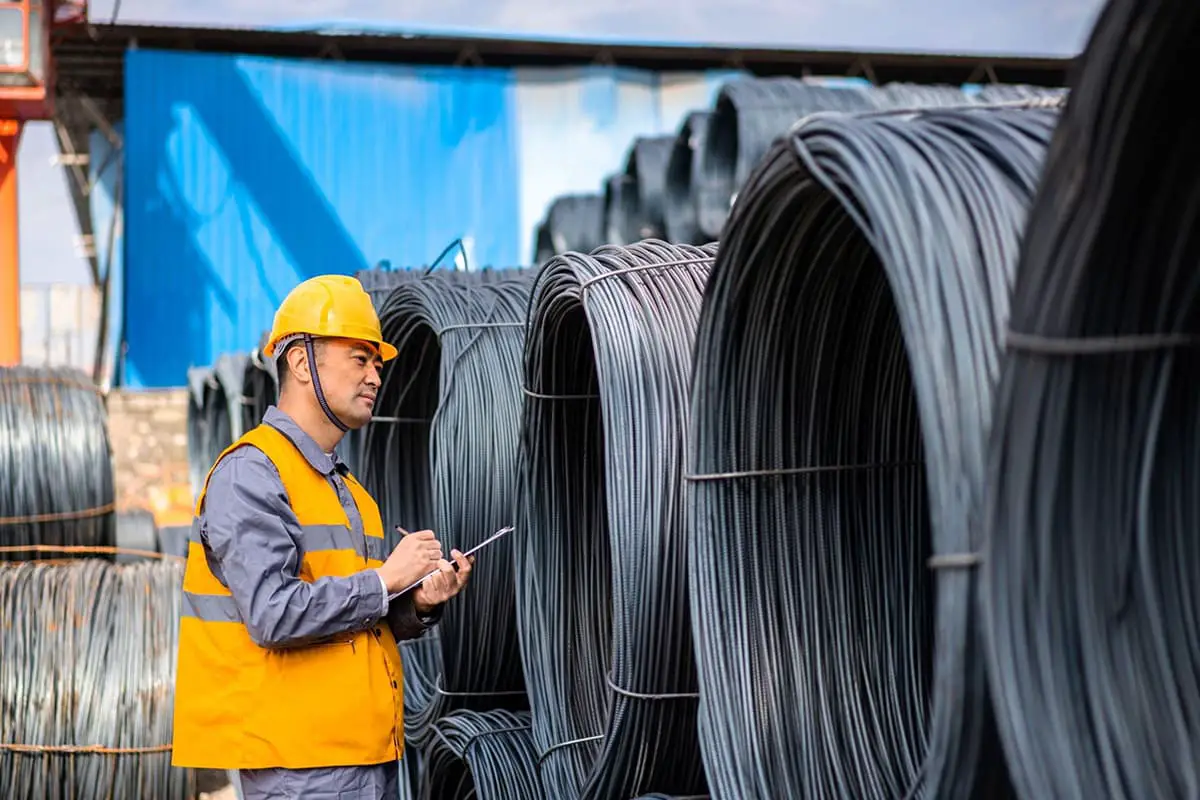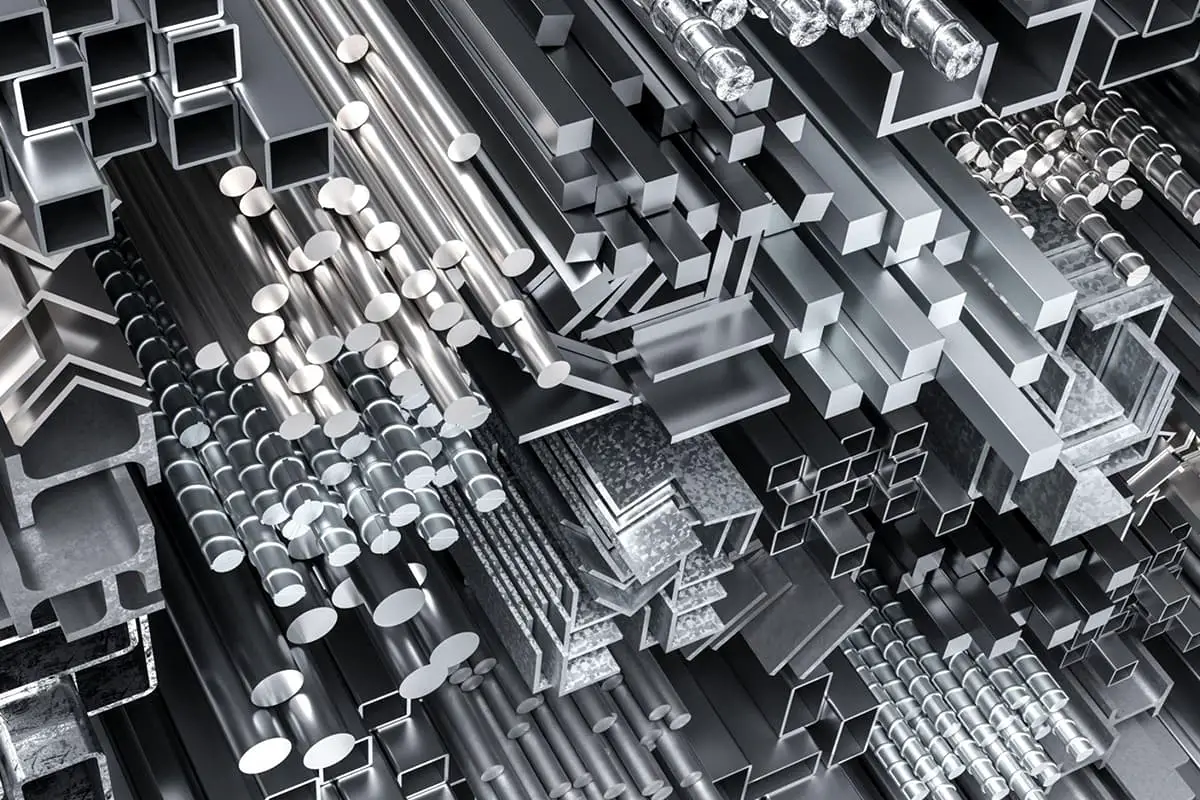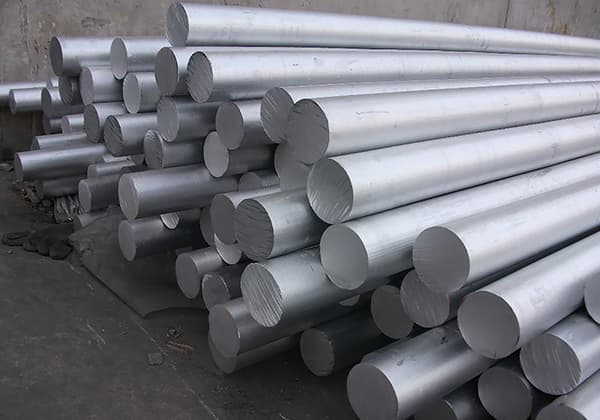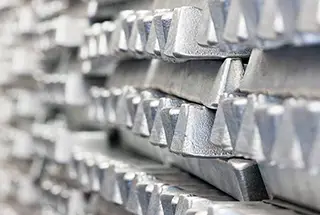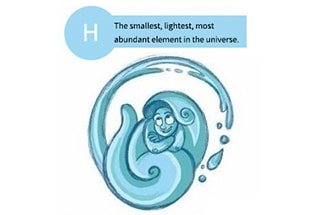
What makes titanium indispensable in aerospace, medical implants, and everyday items like kitchenware? This article delves into titanium’s unique properties, from its high strength and low density to its remarkable corrosion resistance. It explains the differences between pure titanium and its alloys, highlighting their various industrial applications. Discover why titanium’s versatility and durability make it a vital material across multiple sectors.
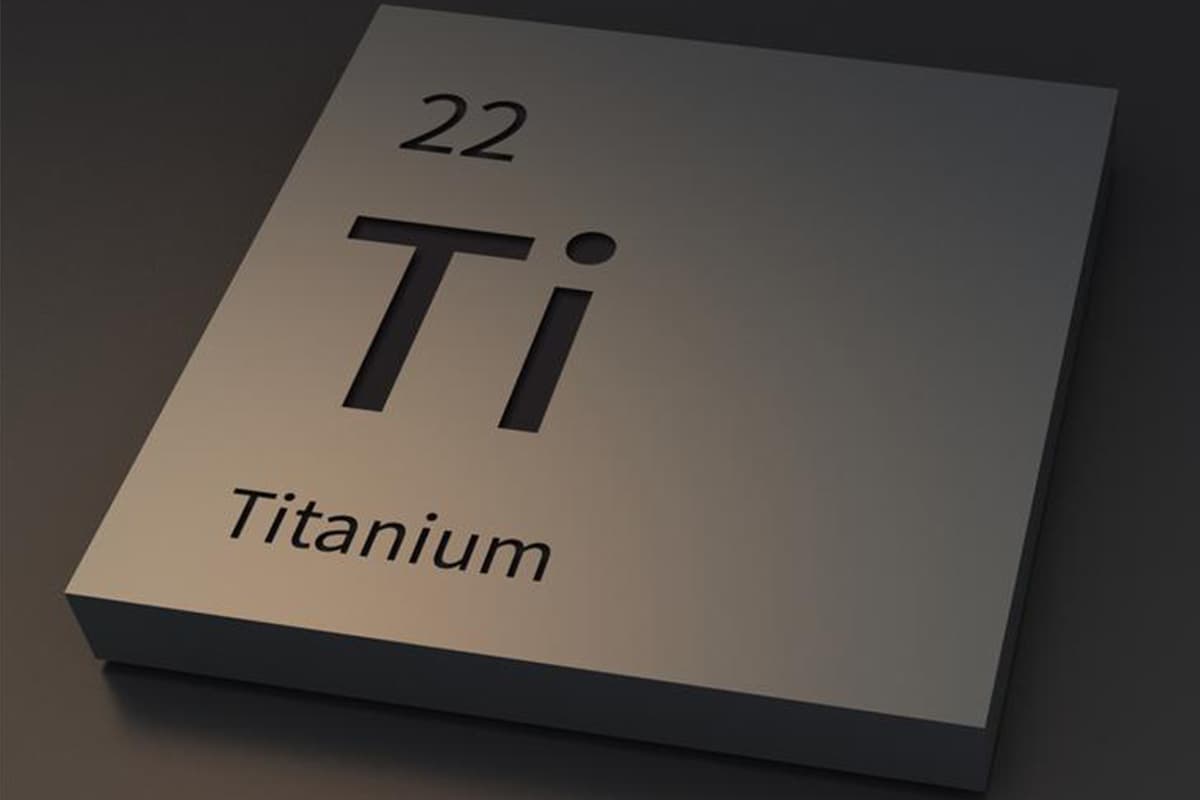
Titanium was first discovered in 1791 by an amateur mineralogist named Gregor from the United Kingdom. By 1795, a German chemist named Klaproth had named this unknown metal substance after the Greek gods, the Titans, which translates to “Titanium” in English.
Titanium is abundant on Earth, with over 140 known types of titanium minerals. However, the primary industrial applications are from ilmenite and rutile. China holds 28% of the world’s ilmenite reserves, ranking first globally.
Titanium, a universally recognized non-toxic element, is expensive due to its high mining and production costs. With its ability to withstand high and low temperatures, resist strong acids and bases, its high strength and low density, it has become a specialized material for NASA rockets and satellites.

It is also used in our country’s super projects such as the Jade Rabbit, J-20, and the Shandong aircraft carrier. After entering the consumer market in the 1980s, its natural antibacterial and biocompatible properties have made it the “King of Honor” in the tableware industry.
China’s titanium industry began in the 1950s. By the mid-1960s, China had established sponge titanium and titanium processing plants in Zunyi and Baoji, respectively, marking China as one of the global powers in the titanium industry.
In the 21st century, China’s titanium industry entered a new period of accelerated development, with its titanium production capacity leading the world.
Pure Titanium
Also known as industrial pure titanium or commercial pure titanium, it is graded according to the content of impurity elements. It has excellent stamping processability and weldability, is insensitive to heat treatment and organizational types, and has a certain strength under satisfactory plasticity conditions. Its strength mainly depends on the content of gap elements oxygen and nitrogen.
The properties of 99.5% industrial pure titanium are: density P=4.5g/cm3, melting point is 1800°C, thermal conductivity λ=15.24W/(M.K), tensile strength σ b=539MPa, elongation: δ =25%, cross-sectional shrinkage rate ψ=25%, elastic modulus E=1.078×105MPa, hardness HB195.
Titanium Alloy
Titanium alloy is an alloy composed of titanium as the base and other elements. It is a relatively young metal, with a history of only sixty to seventy years from discovery to now. Titanium alloy materials have characteristics such as light weight, high strength, small elasticity, high-temperature resistance, and corrosion resistance.
They are mainly used for parts of aero engines, rockets, missiles, etc. Titanium has two kinds of homomorphic birefringent crystals. Titanium is a homomorphic isomorph, with a melting point of 1720°C. Below 882°C, it presents a dense hexagonal crystal structure, called α titanium; above 882°C, it presents a body-centered cubic lattice structure, called β titanium.
Using the different characteristics of the above two structures of titanium, adding appropriate alloy elements, and gradually changing the phase transition temperature and phase content, different organizations of titanium alloys (titanium alloys) are obtained.
Titanium alloy elements can be divided into three categories according to their impact on the phase transition temperature:
① Stable α phase, elements that increase the phase transition temperature are α-stabilizing elements, such as aluminum, magnesium, oxygen, and nitrogen. Among them, aluminum is the main alloying element of titanium alloys, and it has obvious effects on improving the room temperature and high-temperature strength of the alloy, reducing specific gravity, and increasing the elastic modulus.
② Stable β phase, elements that decrease the phase transition temperature are β-stabilizing elements. They can be divided into isomorphous and eutectic. The former includes molybdenum, niobium, vanadium, etc.; the latter includes chromium, manganese, copper, silicon, etc.
③ Neutral elements that have little effect on the phase transition temperature include zirconium, tin, etc.
Titanium and Titanium Alloy Brand and Chemical Composition Table
| Alloy Grade | Nominal Chemical Composition | Chemical Composition, % | ||||||||||||||
| Primary Constituents | Impurities, not exceeding | |||||||||||||||
| Ti | Al | Sn | Mo | Pd | Ni | Si | B | Fe | C | N | H | O | Other Elements | |||
| Single | Sum Total | |||||||||||||||
| TA1ELI | Industrial Pure Titanium | Remained | 0.10 | 0.03 | 0.012 | 0.008 | 0.10 | 0.05 | 0.20 | |||||||
| TA1 | Industrial Pure Titanium | Remained | 0.20 | 0.08 | 0.03 | 0.015 | 0.18 | 0.10 | 0.40 | |||||||
| TA1-1 | Industrial Pure Titanium | Remained | ≤0.20 | ≤0.08 | 0.15 | 0.05 | 0.03 | 0.003 | 0.12 | 0.10 | ||||||
| TA2ELI | Industrial Pure Titanium | Remained | 0.20 | 0.05 | 0.03 | 0.008 | 0.10 | 0.05 | 0.20 | |||||||
| TA2 | Industrial Pure Titanium | Remained | 0.30 | 0.08 | 0.03 | 0.015 | 0.25 | 0.10 | 0.40 | |||||||
| TA3ELI | Industrial Pure Titanium | Remained | 0.25 | 0.05 | 0.04 | 0.008 | 0.18 | 0.05 | 0.20 | |||||||
| TA3 | Industrial Pure Titanium | Remained | 0.30 | 0.08 | 0.05 | 0.015 | 0.35 | 0.10 | 0.40 | |||||||
| TA4ELI | Industrial Pure Titanium | Remained | 0.30 | 0.05 | 0.05 | 0.008 | 0.25 | 0.05 | 0.20 | |||||||
| TA4 | Industrial Pure Titanium | Remained | 0.50 | 0.08 | 0.05 | 0.015 | 0.40 | 0.10 | 0.40 | |||||||
| TA5 | Ti-4Al-0.005B | Remained | 3.3~4.7 | 0.005 | 0.30 | 0.08 | 0.04 | 0.015 | 0.15 | 0.10 | 0.40 | |||||
| TA6 | Ti-5AI | Remained | 4.0~5.5 | 0.30 | 0.08 | 0.05 | 0.015 | 0.15 | 0.10 | 0.40 | ||||||
| TA7 | Ti-5Al-2.5Sn | Remained | 4.0 ~6.0 | 2.0~3.0 | 0.50 | 0.08 | 0.05 | 0.015 | 0.20 | 0.10 | 0.40 | |||||
| TA7ELI | Ti-5Al-2.5SnELI | Remained | 4.50~5.75 | 2.0 ~3.0 | 0.25 | 0.05 | 0.035 | 0.0125 | 0.12 | 0.05 | 0.30 | |||||
| TA8 | Ti-0.05Pd | Remained | 0.04~0.08 | 0.30 | 0.08 | 0.03 | 0.015 | 0.25 | 0.10 | 0.40 | ||||||
| TA8-1 | Ti-0.05Pd | Remained | 0.04~0.08 | 0.20 | 0.08 | 0.03 | 0.015 | 0.18 | 0.10 | 0.40 | ||||||
| TA9 | Ti-0.2Pd | Remained | 0.12~0.25 | 0.25 | 0.08 | 0.03 | 0.015 | 0.20 | 0.10 | 0.40 | ||||||
| TA9-1 | Ti-0.2Pd | Remained | 0.12~0.25 | 0.20 | 0.08 | 0.03 | 0.015 | 0.18 | 0.10 | 0.40 | ||||||
| TA10 | Ti-0.3 Mo-0.8Ni | Remained | 0.2 ~0.4 | 0.6~0.9 | 0.30 | 0.08 | 0.03 | 0.015 | 0.25 | 0.10 | 0.40 | |||||
| Alloy Grade | Nominal Chemical Composition | Chemical Composition, % | |||||||||||||||
| Primary Constituents | Impurities, not exceeding | ||||||||||||||||
| Ti | Al | Sn | Mo | V | Mn | Zr | Si | Nd | Fe | C | N | H | O | Other Elements | |||
| Single | Sum Total | ||||||||||||||||
| TA11 | Ti-8AL-1Mo-1V | Remained | 7.35~8.35 | 0.75~1.25 | 0.75~1.25 | 0.30 | 0.08 | 0.05 | 0.015 | 0.12 | 0.10 | 0.40 | |||||
| TA12 | Ti-5.5Al-4Sn-2Zr-1Mo-1Nd-0.25Si | Remained | 4.8~6.0 | 3.7 ~4.7 | 0.75~1.25 | 1.5~2.5 | 0.2~0.35 | 0.6~1.2 | 0.25 | 0.08 | 0.05 | 0.0125 | 0.15 | 0.10 | 0.40 | ||
| TA12-1 | Ti-5.0Al-4Sn-2Zr-1.5Mo-1Nd-0.25Si | Remained | 4.5~5.5 | 3.7 ~4.7 | 1.0~2.0 | 1.5~2.5 | 0.2~0.35 | 0.6~1.2 | 0.25 | 0.08 | 0.04 | 0.0125 | 0.15 | 0.10 | 0.30 | ||
| TA13 | Ti-2.5Cu | Remained | 2.0~3.0 | 0.20 | 0.08 | 0.05 | 0.010 | 0.20 | 0.10 | 0.30 | |||||||
| TA14 | Ti-2.3AI-11Sn-5Zr-1Mo-0.2Si | Remained | 2.0~2.5 | 10.5~11.5 | 0.8~1.2 | 4.0~6.0 | 0.10~0.50 | 0.20 | 0.08 | 0.05 | 0.0125 | 0.20 | 0.10 | 0.30 | |||
| TA15 | Ti-6.5AI-1Mo-1V-2Zr | Remained | 5.5~7.1 | 0.5~2.0 | 0.8~2.5 | 1.5~2.5 | ≤0.15 | 0.25 | 0.08 | 0.05 | 0.015 | 0.15 | 0.10 | 0.30 | |||
| TA15-1 | Ti-2.5AI-1Mo-1V-1.5Zr | Remained | 2.0~3.0 | 0.5~1.5 | 0.5~1.5 | 1.0~2.0 | ≤0.10 | 0.15 | 0.05 | 0.04 | 0.003 | 0.12 | 0.10 | 0.30 | |||
| TA15-2 | Ti-4Al-1Mo-1V-1.5Zr | Remained | 3.5~4.5 | 0.5~1.5 | 0.5~1.5 | 1.0~2.0 | ≤0.10 | 0.15 | 0.05 | 0.04 | 0.003 | 0.12 | 0.10 | 0.30 | |||
| TA16 | Ti-2Al-2.5Zr | Remained | 1.8~2.5 | 2.0~3.0 | ≤0.12 | 0.25 | 0.08 | 0.04 | 0.006 | 0.15 | 0.10 | 0.30 | |||||
| TA17 | Ti-4Al-2V | Remained | 3.5~4.5 | 1.5~3.0 | ≤0.15 | 0.25 | 0.08 | 0.05 | 0.015 | 0.15 | 0.10 | 0.30 | |||||
| TA18 | Ti-3AI-2.5V | Remained | 2.5~3.5 | 2.0~3.0 | 0.25 | 0.05 | 0.02 | 0.015 | 0.12 | 0.10 | 0.40 | ||||||
| TA19 | Ti-6Al-2Sn-4Zr-2Mo-0.1Si | Remained | 5.5~6.5 | 1.8~2.2 | 1.8~2.2 | 3.6~4.4 | ≤0.13 | 0.25 | 0.05 | 0.05 | 0.0125 | 0.15 | 0.10 | 0.30 | |||
| TA20 | Ti-4Al-3V-1.5Zr | Remained | 3.5~4.5 | 2.5 ~3.5 | 1.0~2.0 | ≤0.10 | 0.15 | 0.05 | 0.04 | 0.003 | 0.12 | 0.10 | 0.30 | ||||
| TA21 | Ti-1Al-1Mn | Remained | 0.4~1.5 | 0.5~1.3 | ≤0.30 | ≤0.12 | 0.30 | 0.10 | 0.05 | 0.012 | 0.15 | 0.10 | 0.30 | ||||
| TA22 | Ti-3Al-1Mo-1Ni-1Zr | Remained | 2.5~3.5 | 0.5 ~1.5 | Ni: 0.3~1.0 | 0.8 ~2.0 | ≤0.15 | 0.20 | 0.10 | 0.05 | 0.015 | 0.15 | 0.10 | 0.30 | |||
| TA22-1 | Ti-3AI-0.5Mo-0.5Ni-0.5Zr | Remained | 2.5~3.5 | 0.2~0.8 | Ni:0.3~0.8 | 0.5~1.0 | ≤0.04 | 0.20 | 0.10 | 0.04 | 0.08 | 0.10 | 0.10 | 0.30 | |||
| TA23 | Ti-2.5Al-2Zr-1Fe | Remained | 2.2 ~3.0 | Fe:0.8~1.2 | 1.7~2.3 | ≤0.15 | 0.10 | 0.04 | 0.010 | 0.15 | 0.10 | 0.30 | |||||
| TA23-1 | Ti-2.5Al-2Zr-1Fe | Remained | 2.2~3.0 | Fe:0.8~1.1 | 1.7~2.3 | ≤0.10 | 0.10 | 0.04 | 0.008 | 0.10 | 0.10 | 0.30 | |||||
| TA24 | Ti-3Al-2Mo-2Zr | Remained | 2.5~3.8 | 1.0~2.5 | 1.0~3.0 | ≤0.15 | 0.30 | 0.10 | 0.05 | 0.015 | 0.15 | 0.10 | 0.30 | ||||
| TA24-1 | Ti-2Al-1.5Mo-2Zr | Remained | 1.5~2.5 | 1.0~2.0 | 1.0~3.0 | ≤0.04 | 0.15 | 0.10 | 0.04 | 0.010 | 0.10 | 0.10 | 0.30 | ||||
| TA25 | Ti-3Al-2.5V-0.05Pd | Remained | 2.5~3.5 | 2.0~3.0 | Pd: 0.04~0.08 | 0.25 | 0.08 | 0.03 | 0.015 | 0.15 | 0.10 | 0.40 | |||||
| TA26 | Ti-3Al-2.5V-0.1Ru | Remained | 2.5~3.5 | 2.0~3.0 | Ru:0.08~0.14 | 0.25 | 0.08 | 0.03 | 0.015 | 0.15 | 0.10 | 0.40 | |||||
| TA27 | Ti-0.10Ru | Remained | Ru:0.08~0.14 | 0.30 | 0.08 | 0.03 | 0.015 | 0.25 | 0.10 | 0.40 | |||||||
| TA27-1 | Ti-0.10Ru | Remained | Ru:0.08~0.14 | 0.20 | 0.08 | 0.03 | 0.015 | 0.18 | 0.10 | 0.40 | |||||||
| TA28 | Ti-3Al | Remained | 2.0~3.3 | 0.30 | 0.08 | 0.05 | 0.015 | 0.15 | 0.10 | 0.40 | |||||||
| Alloy Grade | Nominal Chemical Composition | Chemical Composition, % | |||||||||||||||||||
| Primary Constituents | Impurities, not exceeding | ||||||||||||||||||||
| Ti | Al | Sn | Mo | V | Cr | Fe | Zr | Pd | Nb | Si | Fe | C | N | H | O | Other Elements | |||||
| Single | Sum Total | ||||||||||||||||||||
| TB2 | Ti-5Mo-5V-8Cr-3Al | Remained | 2.5~3.5 | 4.7 ~5.7 | 4.7~5.7 | 7.5~8.5 | 0.30 | 0.05 | 0.04 | 0.015 | 0.15 | 0.10 | 0.40 | ||||||||
| TB3 | Ti-3.5Al-10Mo-8V-1Fe | Remained | 2.7~3.7 | 9.5~11.0 | 7.5~8.5 | 0.8~1.2 | – | 0.05 | 0.04 | 0.015 | 0.15 | 0.10 | 0.40 | ||||||||
| TB4 | Ti-4AI-7Mo-10V-2Fe-1Zr | Remained | 3.0~4.5 | 6.0~7.8 | 9.0~10.5 | 1.5~2.5 | 0.5~1.5 | – | 0.05 | 0.04 | 0.015 | 0.20 | 0.10 | 0.40 | |||||||
| TB5 | Ti-15V-3Al-3Cr-3Sn | Remained | 2.5~3.5 | 2.5~3.5 | 14.0~16.0 | 2.5~3.5 | 0.25 | 0.05 | 0.05 | 0.015 | 0.13 | 0.10 | 0.30 | ||||||||
| TB6 | Ti-10V-2Fe-3Al | Remained | 2.6~3.4 | 9.0~11.0 | 1.6 ~ 2.2 | – | 0.05 | 0.05 | 0.0125 | 0.13 | 0.10 | 0.30 | |||||||||
| TB7 | Ti-32Mo | Remained | 30.0~34.0 | 0.30 | 0.08 | 0.05 | 0.015 | 0.20 | 0.10 | 0.40 | |||||||||||
| TB8 | Ti-15Mo-3Al-2.7Nb-0.25Si | Remained | 2.5~3.5 | 14.0~16.0 | 2.4~3.2 | 0.15-0.25 | 0.40 | 0.05 | 0.05 | 0.015 | 0.17 | 0.10 | 0.40 | ||||||||
| TB9 | Ti-3AI-8V-6Cr-4Mo-4Zr | Remained | 3.0~4.0 | 3.5~4.5 | 7.5~8.5 | 5.5~6.5 | 3.5~4.5 | ≤0.10 | 0.30 | 0.05 | 0.03 | 0.030 | 0.14 | 0.10 | 0.40 | ||||||
| Alloy Grade | Nominal Chemical Composition | Chemical Composition, % | |||||||||||||||||
| Primary Constituents | Impurities, not exceeding | ||||||||||||||||||
| Ti | Al | Sn | Mo | V | Cr | Fe | Mn | Cu | Si | Fe | C | N | H | O | Other Elements | ||||
| Single | Sum Total | ||||||||||||||||||
| TC1 | Ti-2Al-1.5Mn | Remained | 1.0 ~ 2.5 | 0.7 ~2.00.8~2.0 | 0.30 | 0.08 | 0.05 | 0.012 | 0.15 | 0.10 | 0.40 | ||||||||
| TC2 | Ti-4Al-1.5Mn | Remained | 3.5~5.0 | 0.30 | 0.08 | 0.05 | 0.012 | 0.15 | 0.10 | 0.40 | |||||||||
| TC3 | Ti-5AI-4V | Remained | 4.5 ~6.0 | 3.5~4.5 | 0.30 | 0.08 | 0.05 | 0.015 | 0.15 | 0.10 | 0.40 | ||||||||
| TC4 | Ti-6AI-4V | Remained | 5.5~6.8 | 3.5~4.5 | 0.30 | 0.08 | 0.05 | 0.015 | 0.20 | 0.10 | 0.40 | ||||||||
| TC4ELI | Ti-6AI-4VELI | Remained | 5.5 ~6.5 | 3.5~4.5 | 0.25 | 0.08 | 0.03 | 0.0125 | 0.13 | 0.10 | 0.30 | ||||||||
| TC6 | Ti-6Al-1.5Cr-2.5Mo-0.5Fe-0.3Si | Remained | 5.5~7.0 | 2.0~3.0 | 0.8~2.3 | 0.2~0.7 | 0.15~0.40 | – | 0.08 | 0.05 | 0.015 | 0.18 | 0.10 | 0.40 | |||||
| TC8 | Ti-6.5Al-3.5Mo-0.25Si | Remained | 5.8~6.8 | 2.8~3.8 | 0.2~0.35 | 0.40 | 0.08 | 0.05 | 0.015 | 0.15 | 0.10 | 0.40 | |||||||
| TC9 | Ti-6.5Al-3.5Mo-2.5Sn-0.3Si | Remained | 5.8~6.8 | 1.8~2.8 | 2.8~3.8 | 0.2~0.4 | 0.40 | 0.08 | 0.05 | 0.015 | 0.15 | 0.10 | 0.40 | ||||||
| TC10 | Ti-6Al-6V-2Sn-0.5Cu-0.5Fe | Remained | 5.5 ~ 6.5 | 1.5 ~2.5 | 5.5 ~6.5 | 0.35~1.0 | 0.351.0 | – | 0.08 | 0.04 | 0.015 | 0.20 | 0.10 | 0.40 | |||||
| Alloy Grade | Nominal Chemical Composition | Chemical Composition, % | ||||||||||||||||
| Primary Constituents | Impurities, not exceeding | |||||||||||||||||
| Ti | Al | Sn | Mo | V | Cr | Fe | Zr | Nb | Si | Fe | C | N | H | O | Other Elements | |||
| Single | Sum Total | |||||||||||||||||
| TC11 | Ti-6.5Al-3.5Mo-1.5Zr-0.3Si | Remained | 5.8~7.0 | 2.8 ~3.8 | 0.8 ~ 2.0 | 0.2~0.35 | 0.25 | 0.08 | 0.05 | 0.012 | 0.15 | 0.10 | 0.40 | |||||
| TC12 | Ti-5AI-4Mo-4Cr-2Zr-2Sn-1Nb | Remained | 4.5 ~5.5 | 1.5~2.5 | 3.5~4.5 | 3.5~4.5 | 1.5 ~3.0 | 0.5~1.5 | 0.30 | 0.08 | 0.05 | 0.015 | 0.20 | 0.10 | 0.40 | |||
| TC15 | Ti-5Al-2.5Fe | Remained | 4.5~5.5 | 2.0~3.0 | – | 0.08 | 0.05 | 0.013 | 0.20 | 0.10 | 0.30 | |||||||
| TC16 | Ti-3AI-5Mo-4.5V | Remained | 2.2~3.8 | 4.5~5.5 | 4.0~5.0 | ≤0.15 | 0.25 | 0.08 | 0.05 | 0.012 | 0.15 | 0.10 | 0.30 | |||||
| TC17 | Ti-5Al-2Sn-2Zr-4Mo-4Cr | Remained | 4.5~5.5 | 1.5 ~2.5 | 3.5~4.5 | 3.5 ~4.5 | 1.5~2.5 | 0.25 | 0.05 | 0.05 | 0.012 | 0.08~0.13 | 0.10 | 0.30 | ||||
| TC18 | Ti-5AI-4.75Mo-4.75v-1Cr-1Fe | Remained | 4.4~ 5.7 | 4.0~5.5 | 4.0~5.5 | 0.5~1.5 | 0.5 ~ 1.5 | ≤0.30 | ≤0.15 | – | 0.08 | 0.05 | 0.015 | 0.18 | 0.10 | 0.30 | ||
| TC19 | Ti-6AI-2Sn-4Zr-6Mo | Remained | 5.5~6.5 | 1.75~2.25 | 5.5 ~6.5 | 3.5~4.5 | 0.15 | 0.04 | 0.04 | 0.0125 | 0.15 | 0.10 | 0.40 | |||||
| TC20 | Ti-6Al-7Nb | Remained | 5.5~6.5 | 6.5~7.5 | Ta≤0.5 | 0.25 | 0.08 | 0.05 | 0.009 | 0.20 | 0.10 | 0.40 | ||||||
| TC21 | Ti-13Nb-13Zr | Remained | 12.5-14.0 | 12.5~14.0 | 0.25 | 0.08 | 0.05 | 0.012 | 0.15 | 0.10 | 0.40 | |||||||
| TC22 | Ti-6AI-4V-0.05Pd | Remained | 5.5~6.75 | 3.5 ~4.5 | Pd: 0.04~0.08 | 0.40 | 0.08 | 0.05 | 0.015 | 0.20 | 0.10 | 0.40 | ||||||
| TC23 | Ti-6Al-4V-0.1Ru | Remained | 5.5~6.5 | 3.5~4.5 | Ru: 0.08~0.14 | 0.25 | 0.08 | 0.03 | 0.015 | 0.13 | 0.10 | 0.40 | ||||||
TA1 (American Standard: Gr1)
TA1 (Gr1) Titanium is the first of four industrial pure titanium grades. It’s the softest and most ductile of these grades. It has the highest formability, excellent corrosion resistance, and high impact toughness. TA1 grade is the material of choice for any application requiring easy formability, typically used for titanium plates and tubes.
TA2 (American Standard: Gr2) Grade
Due to its diversified and wide availability, TA2 grade titanium is known as the “workhorse” of the commercial pure titanium industry. It shares many qualities with TA1 grade titanium alloy but is slightly stronger. Both are equally corrosion-resistant.
This grade has good weldability, strength, ductility, and formability. This makes TA2 grade titanium rods and plates the top choice for many applications in construction, power generation, and the medical industry.
TA3 (American Standard: Gr3) Grade
This grade is the least used of the commercial pure titanium grades, but that does not lessen its value. TA3 grade is stronger than TA1 and TA2 grades, with similar ductility, only slightly less formability. But it has higher mechanical properties than its predecessors.
TA3 grade is used in applications requiring moderate strength and primary corrosion resistance, such as aerospace, chemical processing, and the marine industry.
TA4 (American Standard: Gr4) Grade
TA4 grade is considered the strongest of the four commercial pure titanium grades. It is also known for its excellent corrosion resistance, good formability, and weldability. It is used in applications requiring high strength, such as some airframe components, low-temperature vessels, heat exchangers, etc.
TA9 (American Standard: Gr7) Grade
TA9 grade is mechanically and physically equivalent to TA2 grade, except that the addition of palladium makes it an alloy. Grade 7 has excellent weldability and characteristics, being the most corrosion-resistant of all titanium alloys.
In fact, it’s the most corrosion-resistant in reducing acids. TA9 grade is used for chemical process and production equipment components. TA9 has extremely strong corrosion resistance, especially in reducing acidic environments.
TA9-1 (American Standard: Gr11) Grade
TA9-1 grade is very similar to TA1 grade, with a small amount of palladium added to enhance corrosion resistance, making it an alloy. This corrosion resistance can be used to prevent crevice corrosion and reduce acid in chloride environments.
Other useful properties include optimal ductility, cold formability, useful strength, impact toughness, and excellent weldability. This alloy can be used for the same titanium applications as grade 1, especially where corrosion is required.
Ti 6Al-4V (Chinese Standard TC4, American Standard Gr5) Grade
Often referred to as the “mainstay” of titanium alloys, Ti 6Al-4V or Grade 5 titanium is the most commonly used of all titanium alloys. It accounts for 50% of the world’s total titanium usage. Its popularity stems from its numerous advantages.
Ti 6Al-4V can be heat-treated to increase its strength. It can be used for welding structures at usage temperatures as high as 600°F. The alloy has high strength, useful formability, and high corrosion resistance, all while being lightweight. The versatility of Ti 6Al-4V makes it the optimal alloy for various industries like aerospace, medical, marine, and chemical processing. It can be used to create the following technical contents:
Ti 6AL-4V ELI (Chinese Standard TC4ELI, American Standard Gr23) Grade
The Ti 6AL-4V ELI or TC4ELI grade is a purer form of Ti 6Al-4V. It can be fashioned into coils, stranded wire, electrical wire, or flat wire. It’s the top choice for any situation requiring high strength, lightness, good corrosion resistance, and high toughness. It has excellent damage tolerance compared to other alloys.
These advantages make the TC4ELI grade the ultimate dental and medical titanium grade. Due to its biocompatibility, good fatigue strength, and low modulus, it can be used for biomedical applications such as implantable components. It’s also useful for detailed surgical procedures, such as:
TA10 (American Standard Gr12) Grade
The TA10 grade of titanium is rated “excellent” for its high-quality weldability. It’s a highly durable alloy that provides immense strength at high temperatures. TA10 grade titanium has characteristics similar to the 300 series of stainless steel.
This alloy can be hot or cold formed using pressing molding, hydroforming, stretch forming, or drop hammering. Its ability to be formed in various ways makes it useful in many applications. The high corrosion resistance of this alloy also gives it invaluable worth to manufacturing equipment that needs to consider crevice corrosion. TA10 Grade can be used in the following industries and applications:
Ti 5Al-2.5Sn
Ti 5Al-2.5Sn is a non-heat-treatable alloy that offers good weldability and stability. It also has high-temperature stability, high strength, good corrosion resistance, and good creep resistance. Creep refers to the phenomenon of plastic strain occurring over a long time at high temperatures. Ti 5Al-2.5Sn is primarily used in aircraft and fuselage applications as well as low-temperature applications.
Lastly, attached is a comparison of the old and new titanium grades and their chemical compositions according to foreign and national standards.
| Standard | Grade | Chemical Composition, % | ||||||||
| Impurities, not exceeding | ||||||||||
| Ti | Fe | C | N | H | O | Other Elements | ||||
| Single | Sum Total | |||||||||
| GB/T 3620.1-200X | TA1ELI | Remained | 0.10 | 0.03 | 0.012 | 0.008 | 0.10 | 0.05 | 0.20 | |
| ISO 5832/2-1999 | Level 1 ELI | Remained | 0.10 | 0.03 | 0.012 | 0.0125 | 0.10 | – | – | |
| GB/T 3623-1998 | TA0ELI | Remained | 0.10 | 0.03 | 0.02 | 0.008 | 0.10 | 0.05 | 0.20 | |
| GB/T 3620.1-200X | TA1 | Remained | 0.20 | 0.08 | 0.03 | 0.015 | 0.18 | 0.10 | 0.40 | |
| ISO 5832/2-1999 | Level 1 | Remained | 0.20 | 0.10 | 0.03 | 0.0125 | 0.18 | – | – | |
| ASTM B Titanium Materials | Grade 1 | Remained | 0.20 | 0.08 | 0.03 | 0.015 | 0.18 | 0.1 | 0.4 | |
| GB/T 3620.1-1994 | TA0 | Remained | 0.15 | 0.10 | 0.03 | 0.015 | 0.15 | 0.1 | 0.4 | |
| GB/T 3620.1-200X | TA2 | Remained | 0.30 | 0.08 | 0.03 | 0.015 | 0.25 | 0.10 | 0.40 | |
| ISO 5832/2-1999 | Level 2 | Remained | 0.30 | 0.10 | 0.03 | 0.0125 | 0.25 | – | – | |
| ASTM B Titanium Materials | Grade 2 | Remained | 0.30 | 0.08 | 0.03 | 0.015 | 0.25 | 0.1 | 0.4 | |
| GB/T 3620.1-1994 | TA1 | Remained | 0.25 | 0.10 | 0.03 | 0.015 | 0.20 | 0.1 | 0.4 | |
| GB/T 3620.1-200X | TA3 | Remained | 0.30 | 0.08 | 0.05 | 0.015 | 0.35 | 0.10 | 0.40 | |
| ISO 5832/2-1999 | Level 3 | Remained | 0.30 | 0.10 | 0.05 | 0.0125 | 0.35 | – | – | |
| ASTM B Titanium Materials | Grade 3 | Remained | 0.30 | 0.08 | 0.05 | 0.015 | 0.35 | 0.1 | 04 | |
| GB/T 3620.1-1994 | TA2 | Remained | 0.30 | 0.10 | 0.05 | 0.015 | 0.25 | 0.1 | 0.4 | |
| GB/T 3620.1-200X | TA4 | Remained | 0.50 | 0.08 | 0.05 | 0.015 | 0.40 | 0.10 | 0.40 | |
| ISO 5832/2-1999 | Level 4 | Remained | 0.50 | 0.10 | 0.05 | 0.0125 | 0.40 | – | – | |
| ASTM B Titanium Materials | Grade 4 | Remained | 0.50 | 0.08 | 0.05 | 0.015 | 0.40 | 0.1 | 0.4 | |
| GB/T 3620.1-1994 | TA3 | Remained | 0.40 | 0.10 | 0.05 | 0.015 | 0.30 | 0.1 | 0.4 | |
Although titanium and titanium alloy materials are abundant, their prices are very high. This is because titanium has low chemical activity at high temperatures, making its smelting technology and operating environment quite demanding. It must be smelted under high temperature and vacuum conditions, often reaching temperatures above 800℃.
This makes it far more challenging than steel smelting. Therefore, whenever people mention titanium alloys, they perceive it as a high-end metal material with low production and high prices, and thus, it’s rarely used.
Currently, due to the excellent properties of titanium alloys – being lightweight, high-strength, and heat resistant – titanium and titanium alloy materials are widely used in the manufacturing of cutting-edge weapons and important national instruments, particularly in the aerospace industry. Here are some examples of its applications in the chemical industry:
1. Alkali Production Industry
The introduction of titanium coolers in the alkali production industry has effectively resolved the issue of substandard chlorine gas produced due to the unreasonable traditional cooling process. It has also changed the face of the chlor-alkali industry, as the titanium alloy coolers invested can have a lifespan of up to 20 years.
2. Salt Production Industry
The most advanced salt production technology currently used is vacuum salt production. The high-temperature, concentrated brine produced during this process can cause serious damage to carbon steel structures, causing equipment leakage.
Implementing a titanium-steel composite structure in the heating and evaporating chambers can effectively prevent salt scaling, improve salt quality, and reduce the high-concentration brine’s corrosion impact on the pipe walls during the evaporation process, thereby extending the maintenance cycle.
Aerospace Industry
1. Aviation Industry
Titanium alloys used in aviation are divided into aircraft structural titanium alloys and engine structural titanium alloys. The main applications of titanium alloy structures on aircraft include landing gear components, frames, beams, fuselage skins, and heat shields. The Il-76 aircraft from Russia uses high-strength BT22 titanium alloy to manufacture key components such as landing gear and load-bearing beams.
The main landing gear crossbeam of the Boeing 747 is made of Ti-6Al-4V material, with a forged piece measuring 6.20 meters long and 0.95 meters wide, weighing up to 1545 kilograms. The high-strength and high-toughness Ti-62222S titanium alloy is used in crucial parts of the C-17 plane’s horizontal stabilizer axis.
In terms of aircraft engines, titanium alloys are used in compressor disks, blades, drums, high-pressure compressor rotors, and compressor casings. The leading edge and tip of the fan blade of the Boeing 747-8GENX engine are protected by a titanium alloy casing, which has only been replaced three times in a service period of 10 years.
2. Spacecraft Industry
The working conditions of spacecraft are extremely harsh. Apart from the need for superior technical design in materials, the excellent characteristics and functions of the materials themselves are also crucial, making titanium alloys stand out among many materials.
In the field of space equipment, during the Apollo program of the United States in the 1960s, the spacecraft’s two-man cabin, enclosed cabin wing beams, and ribs were all made of Ti-5Al-2.5Sn, with linings made of pure titanium.
The German MT Aerospace Company has produced a high-strength Ti-15V-3Cr alloy propulsion system storage tank, which is used on the giant platform of the European Alpha communications satellite.
There are many examples of the application of Russian titanium alloys in space engineering, such as the use of a large 3.5-ton BT23 titanium alloy forging and forging in the Energia cargo rocket. In addition, titanium alloys are also used in the fuel tanks of liquid fuel rocket engines, low-temperature liquid storage tanks, and liquid hydrogen pump impellers.
Similarly, in the rapid development of domestic space engineering, titanium alloys are widely used. From the Dongfang 1 satellite in 1970 to the current Shenzhou series spacecraft and Chang’e lunar probes, titanium alloys have been used.
In addition, the low-temperature TA7ELI titanium alloy gas cylinder developed by China for use in a liquid hydrogen environment has been used in the Long March series of launch vehicles. Harbin Institute of Technology has used TC4 titanium alloy to make the wheel rims of lunar rovers. In addition, China has also used BT20 and other high-strength titanium alloys to manufacture the engine casings and nozzles of missiles.
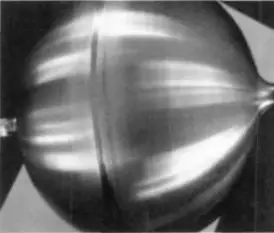

3. Maritime Applications
Titanium and its alloys are widely used in nuclear submarines, deep submersibles, atomic icebreakers, hydrofoil boats, hovercraft, minesweepers, as well as in propellers, whip antennas, seawater pipelines, condensers, heat exchangers, acoustic devices, and firefighting equipment. For instance, the U.S.
“Sea Cliff” deep submersible is equipped with a titanium observation cabin and control cabin, capable of diving to depths of up to 6100m. Toho Titanium Company of Japan, in collaboration with Fujin Shipbuilding, built the “Mori Support Heaven II”, a titanium speedboat that enjoyed a period of high sales in the U.S. China’s first self-designed and integrated manned submersible, the “Jiaolong”, also employs titanium alloys and covers 99.8% of the world’s oceanic regions.
Despite the significant advancements in the development of titanium and its alloys, there are challenges that persist. These challenges primarily fall into three categories:
1) Production Aspect
China is a major player in the titanium industry, but the quantity of high-quality products it produces is low, and there is a scarcity of titanium products with special characteristics.
Furthermore, China does not yet have the ability to mass-produce titanium strips and extruded titanium profiles. This limitation hampers the development and utilization of titanium and its alloys in the aerospace and marine fields. The goal of further increasing the use of titanium in aviation engines to about 50% still remains a considerable challenge.
2) Performance Aspect
Titanium is highly chemically active, making it susceptible to contamination by other elements. This necessitates a high level of precision in the processing and manufacturing of titanium alloys.
Additionally, the high-performance products that result require a comprehensive evaluation of their mechanical, physical, chemical, and technological properties. The drastic decline in creep resistance and high-temperature oxidation resistance above 600°C are the two major obstacles to the broadened application of existing titanium alloys.
3) Cost Aspect
Currently, efforts are being made worldwide to reduce the application costs of titanium alloys, and considerable progress has been achieved.
However, in terms of China’s current situation, the country’s management and technological levels have not yet reached an ideal state. Its domestically produced titanium alloy products lack competitive pricing on an international scale, which is detrimental to their wider usage.
At present, the primary application fields of titanium alloys remain in the aerospace and military industrial sectors. However, the prospects for developing new application fields, such as in automobiles, trains, high-speed rail, and even everyday civilian sectors, are still vast.
Additionally, replacing expensive alloy elements with cheaper ones, as well as reducing the cost of titanium alloy components through technological means, are important subjects in future research on titanium alloys. Once high-end applications of titanium alloys achieve low-cost manufacturing, they will find usage across various fields.

